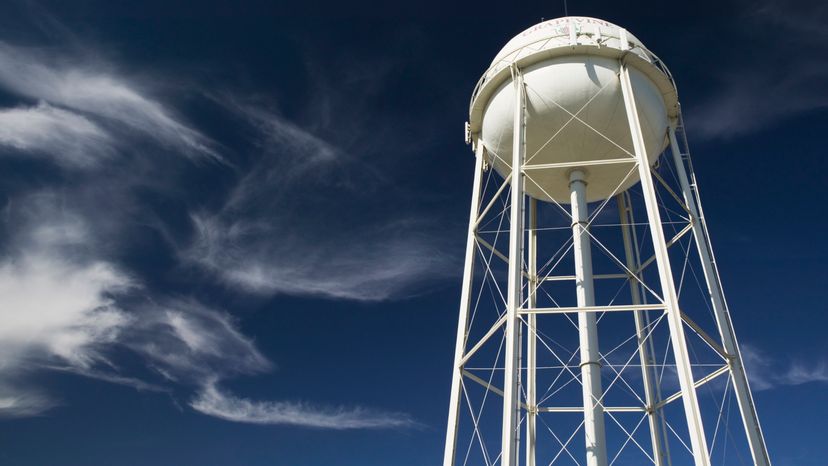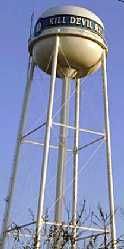
Key Takeaways
- Water towers in cold climates like North Dakota incorporate heating systems into their design to prevent the water from freezing solid, using methods like wrapping the riser pipe with heat tape and adding insulation.
- While ice may form on the surface of the water in the tower, it usually doesn't freeze completely, allowing it to remain in use even in winter. The ice tends to float on the surface, rising and falling with the water level.
- In more extreme climates, engineers may also install a heating system in an adjacent building or the valve pit to introduce heated water or steam into the base of the riser, ensuring the heat rises into the tank to prevent freezing.
Many people who read How Water Towers Work have the following question: "Why, in a place like Montana or North Dakota, do water towers not freeze solid in the winter?" To answer this question, we need an expert. Malcolm Jackson is the Business Development Manager for the tank maintenance company Utility Service Co., Inc. The company has home offices in Perry, GA, and has thousands of elevated tanks under full-service maintenance contracts in 17 states.
Here is Malcolm's answer to the question:
Advertisement
They do freeze. They just don't normally freeze solid. In the more extreme climates, like North Dakota, engineers incorporate heating systems into the tank design. Specifically, the central pipe that runs from ground level up into the bottom of the tank is called a riser. Water is pumped into the base of the riser and allowed to rise into the tank. Many tank risers are wrapped with heat tape, covered with insulation and capped by an aluminum jacket. In addition, a heating system may be installed in an adjacent building or into the valve pit underneath the riser. The heater introduces heated water or steam into the base of the riser. In either case, the heat rises into the tank to retard freezing. Ice forms on the surface of the contents, in many cases several feet thick. Normally, this ice layer floats on the surface as the water level rises and falls. Many times the ice freezes to the roof or upper walls of the tank and remains there as the level fluctuates underneath under daily usage. In more temperate climates, steel ladders are installed inside the tank, and riser and water level control probes hang from the roof. In colder climates, all inside fixtures must be left out since the ice layer tends to rip them out.
Thanks, Malcolm!
Advertisement

